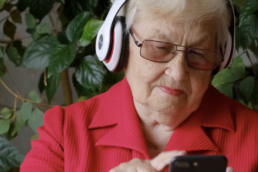Chronic pain can impact many different parts of the body, leading to serious structural and functional effects on the nervous system. Chronic pain and its burden on the brain becomes more prevalent in older adults. In addition, grey and white matter reorganization in the brain is thought to be accelerated in those with chronic pain.
Written by:
Vaidhehi Veena Sanmugananthan
Edited by:
Georgia Hadjis
Gaussian process regression is an adaptive supervised multivariate statistical learning method found to be predictive of chronical age based on neuroimaging data. Models using this method have been used to determine brain predicted age differences across different diseases. Many of these studies have revealed that accelerated brain aging differences in these conditions vs. healthy controls are associated with increased risk of mortality and reduced cognitive abilities.
Studies have shown that a mixed cohort of people with chronic pain have larger brain-age gaps (brain-AGE), suggesting accelerated aging of the brain in chronic pain. Since chronic pain can differ in etiology, severity, pain frequency and sex-linked prevalence, brain-AGE could potentially differ across chronic pain disorders. In this study, UTCSP scientist Dr. Mojgan Hodaie and colleagues aimed to determine brain-AGE across 3 different chronic pain conditions: trigeminal neuralgia [TN], low back pain [BP] and osteoarthritis [OA]. They also examined sex effects in brain-AGE in these pain disorders and whether they relate to TN pain treatment.
A machine learning model was built using publically available neuroimaging data from a 3 Tesla MRI scanner of 812 healthy controls (HCs) in order to extract brain-AGE from 45 TN, 52 OA and 50 BP participants. They used false discovery rate Welch t-tests to delineate significant differences in brain-AGE between each pain group with HCs. The authors found that TN and OA cohorts have significantly larger brain-AGE, and across all pain groups, brain-AGE was driven by females. Large brain-AGE in the TN group was associated with gamma knife radiosurgery for pain and inversely associated with age of diagnosis of the pain disorder. These results suggest that younger women with TN are a potential vulnerable group that may require more prevalent and earlier chronic pain interventions. Based on these results, the authors concluded that brain-AGE could likely be used as a biomarker for efficacy of pain treatment.
These results suggest that younger women with TN are a potential vulnerable group that may require more prevalent and earlier chronic pain interventions. Based on these results, the authors concluded that brain-AGE could likely be used as a biomarker for efficacy of pain treatment.

